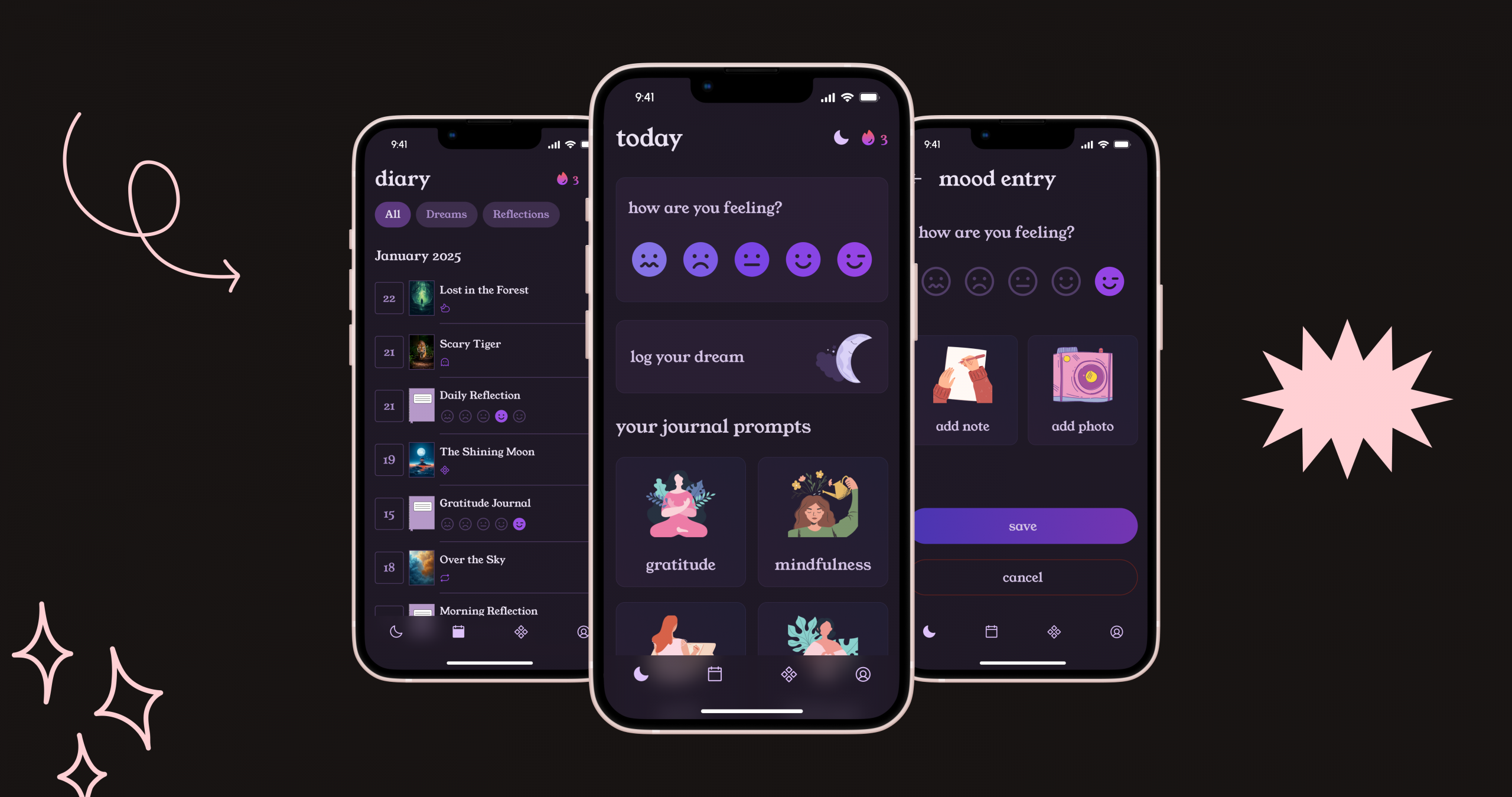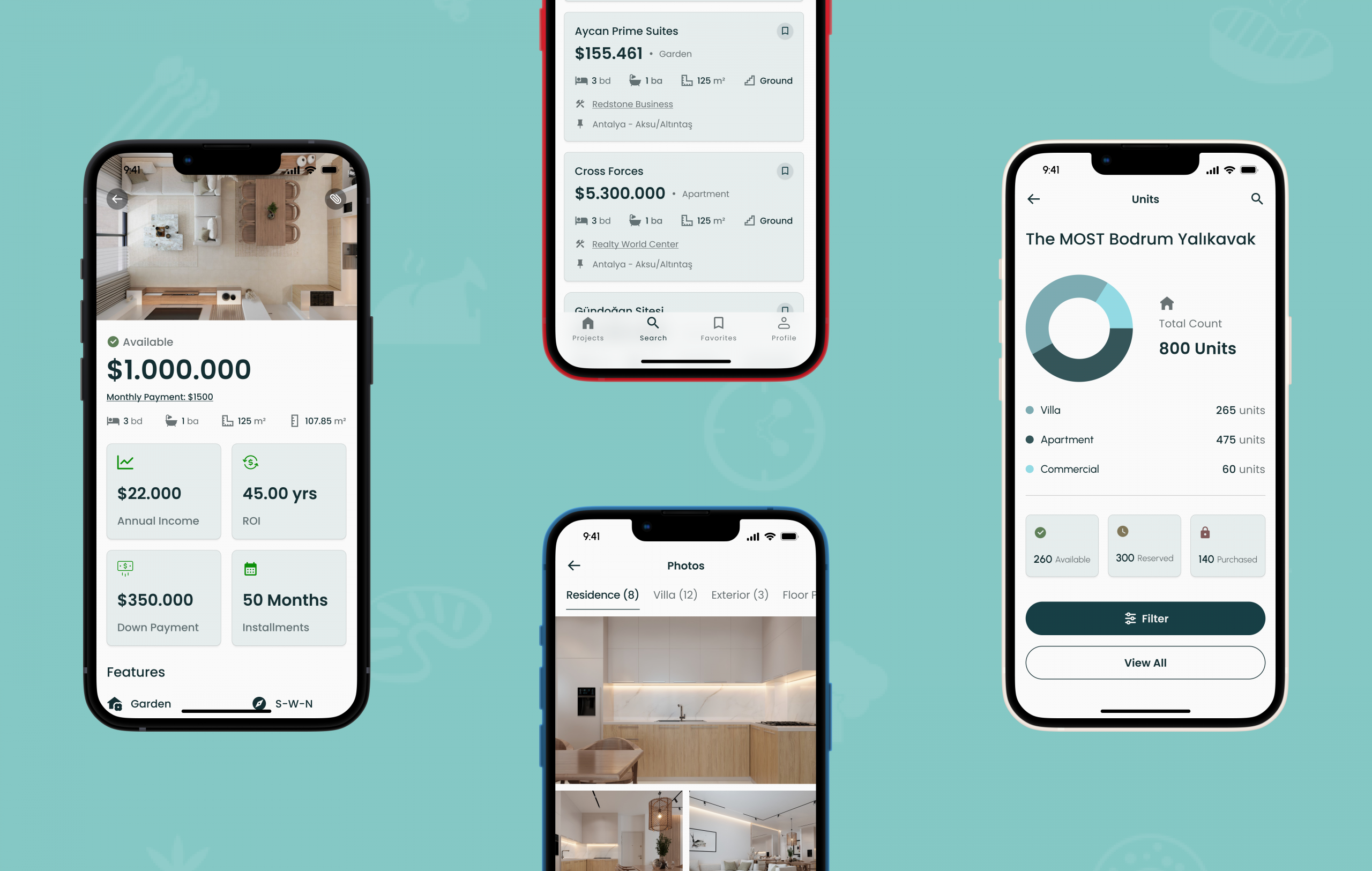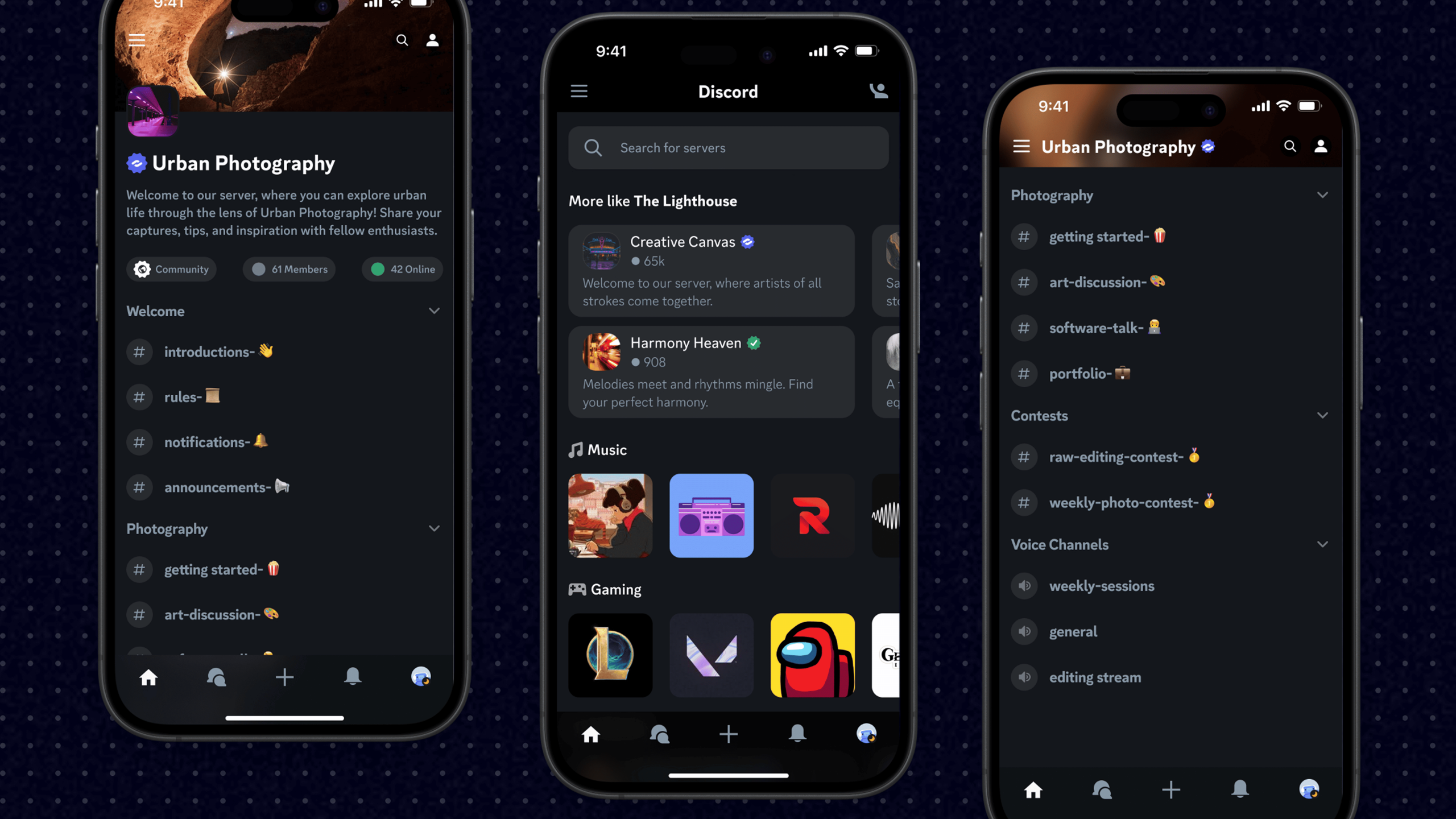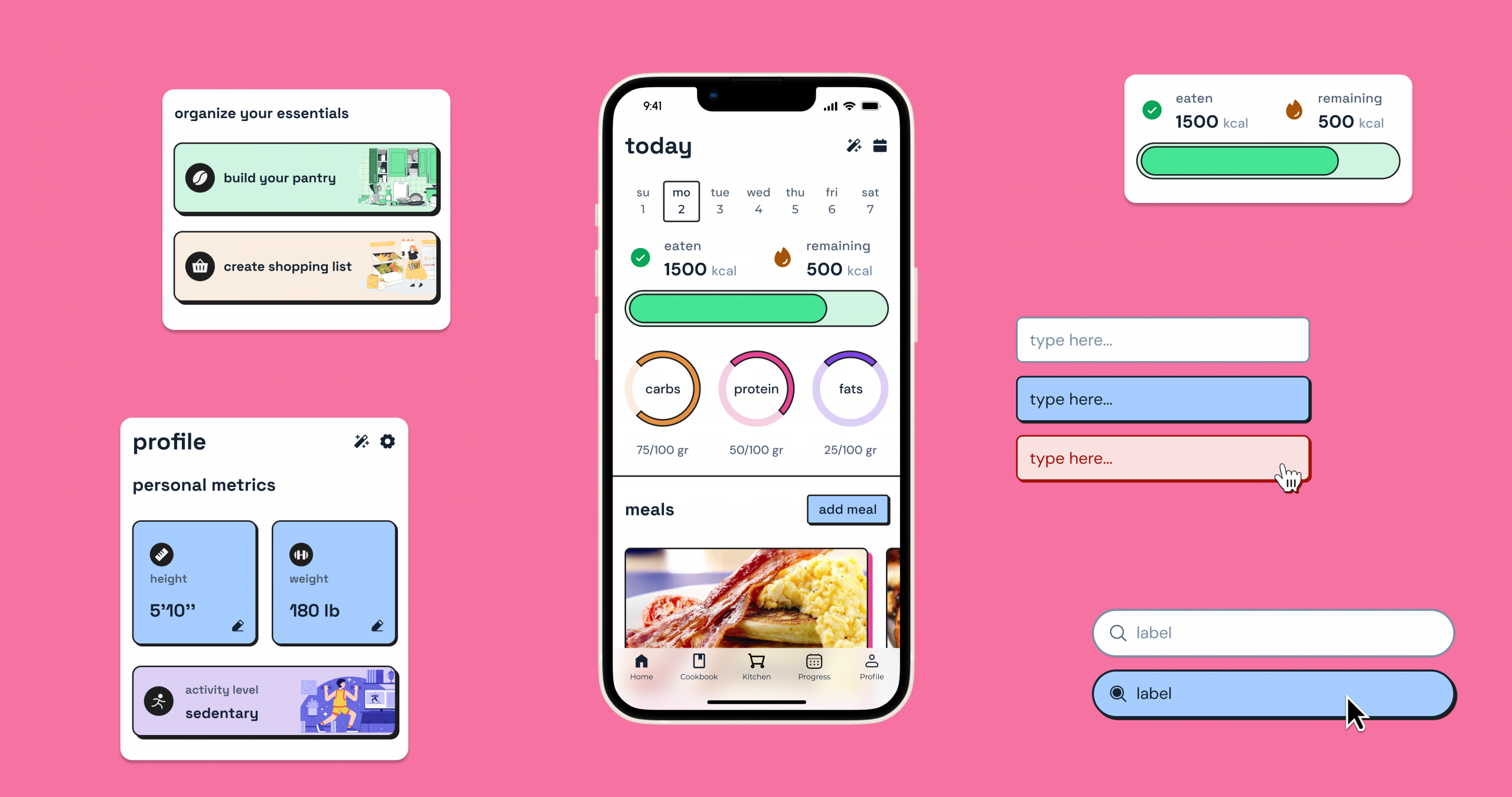Dream Master started as a simple AI-powered dream interpretation app. My challenge was to evolve it into something more meaningful—a self-awareness tool that users could return to regularly, not just after vivid dreams.
The Problem: The chatbot Cliché
There are already dozens of AI apps that “interpret dreams.” Most feel disposable, just a chat window and some generic text. Of course, this is before mentioning that people can always use free AI models like ChatGPT.
The problem isn’t access to AI, it’s the experience around it. These apps rarely offer anything beyond novelty. They lack structure, emotional design, and a reason to return. The result is a wave of tools that technically work, but feel shallow and interchangeable.
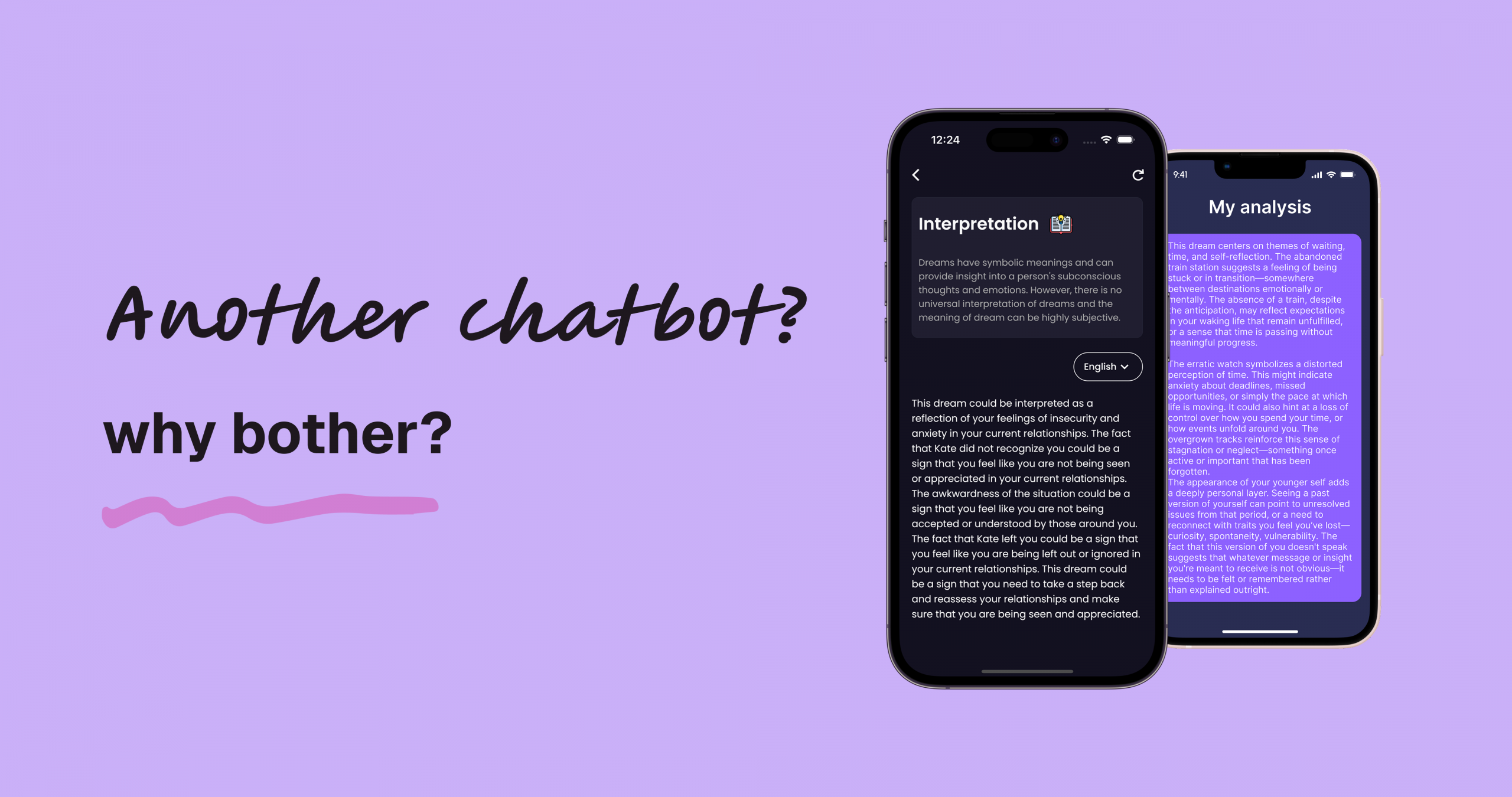
Worse, they all feel the same. The interfaces are generic, the tone is inconsistent, and the interpretations are often vague or overly dramatic. There’s no sense of trust, no continuity, and nothing to suggest that the app understands (or even remembers) the user. It’s not a product. It’s a one-time trick.
This sameness creates a trust gap. Users quickly learn that these apps aren’t offering insight, they’re just repackaging what any AI model could say, with little sensitivity to tone, repetition, or emotional nuance. Without meaningful differentiation or care in the design, there’s no reason to return. The result is a category of tools that are easy to try, and just as easy to forget.
As I explored ways to solve this problem, I found myself thinking;
Just Because It’s AI, It Doesn’t Have to Feel Like AI

Instead of presenting a single block of AI-generated text, I broke the interpretation into distinct parts, each tied to a recognizable dream symbol. Every symbol reveals its own short story or insight, giving the user a clearer sense of meaning without overwhelming them.

To make the insights feel more dynamic and digestible, I used a story-like format, each symbol appears as its own “card” that users can tap through, like reading fragments of a personal narrative.
This not only makes the content easier to absorb, but also adds rhythm and visual interest to the experience. It feels more like exploring layers of a dream than reading a generic summary.
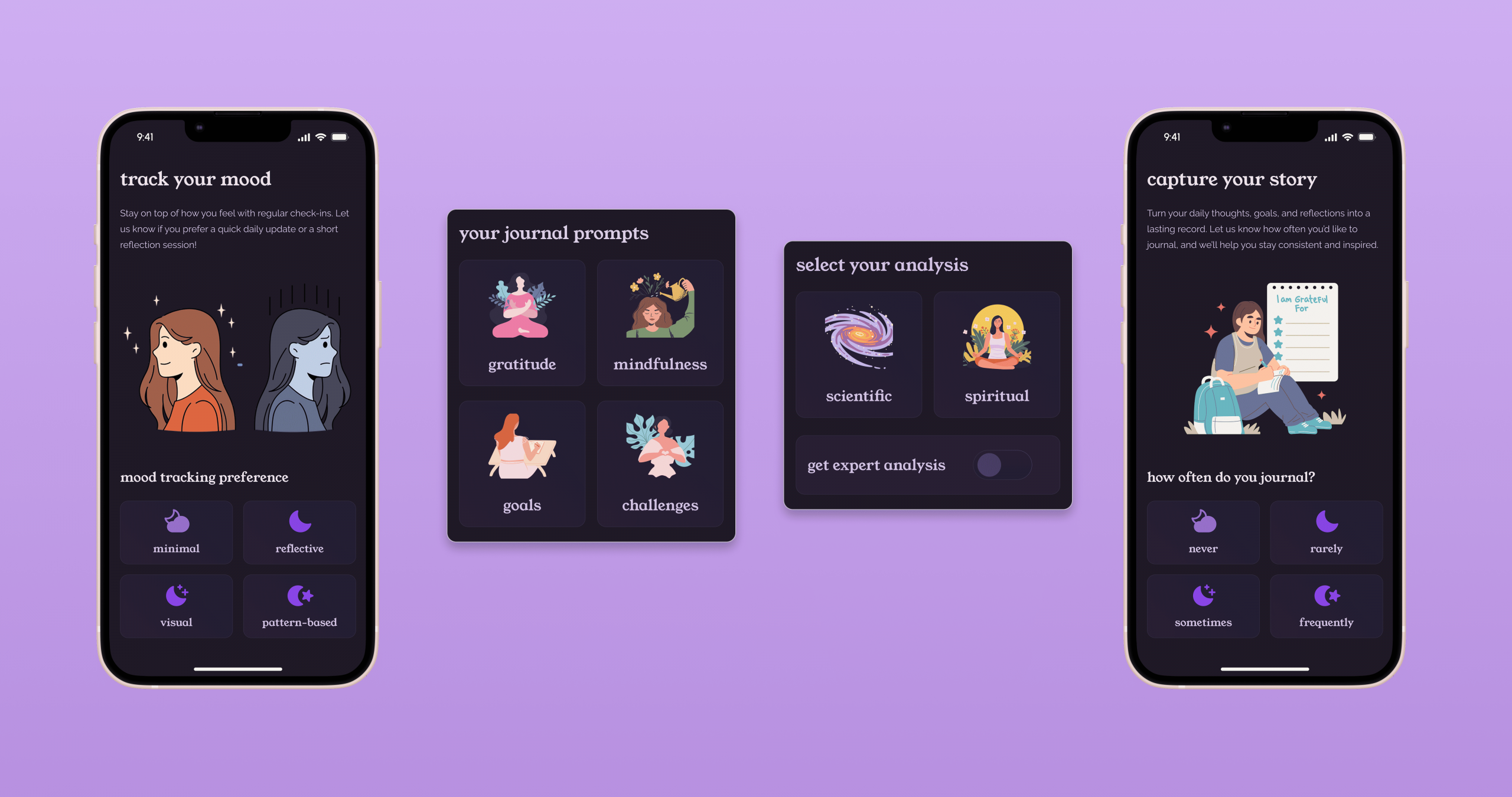
One of the biggest issues with AI dream apps is how disposable they feel; most look like a rushed chatbot wrapped in minimal UI. To break that pattern, I focused on giving Dream Master a clear visual identity that felt warm, personal, and intentional.
This meant cozy illustrations, subtle gradients, gentle shadows, and soft strokes to create visual depth. I also chose typography that felt calm and readable, avoiding anything overly “techy” or robotic.
Together, these choices gave the app a sense of care, something that signals to users: This isn’t just another AI tool.
The Problem: User value
Most dream apps focus on a single interaction: write down your dream, get an interpretation. That’s where the experience begins and ends. There’s rarely any depth beyond that first output; no feedback, no sense of growth, and no continuity. Once the novelty wears off, users stop opening the app.
The market is also oversaturated. New apps appear constantly, all built around the same basic formula. Many reuse the same models, tones, and even interfaces. With so little differentiation, it becomes difficult for any one app to stand out or build long-term value for users.
Most apps in this space don’t give users much to keep. Once the interpretation is read, there’s nothing to build on; no history, no patterns, no sense of progress. Without a sense of continuity or personal investment, even interesting insights start to feel disposable.
Reflections: Give Users a Reason To Come Back

If a single dream interpretation isn’t enough to keep people coming back, the app needs to offer more. Not more features for the sake of it; but more ways for users to connect, reflect, and build meaning over time. Dream interpretation is just one entry point. The bigger opportunity lies in supporting the emotional context around it.
That’s where Reflections come in. Consisting of mood tracking and journaling, it doesn’t compete with dream logging, it completes it.
By capturing how the user feels, what they’re thinking, and how those things change over time, the app becomes more than a tool. It becomes a ritual. Something that adapts to both dream-heavy and dreamless days, while still reinforcing reflection and continuity.
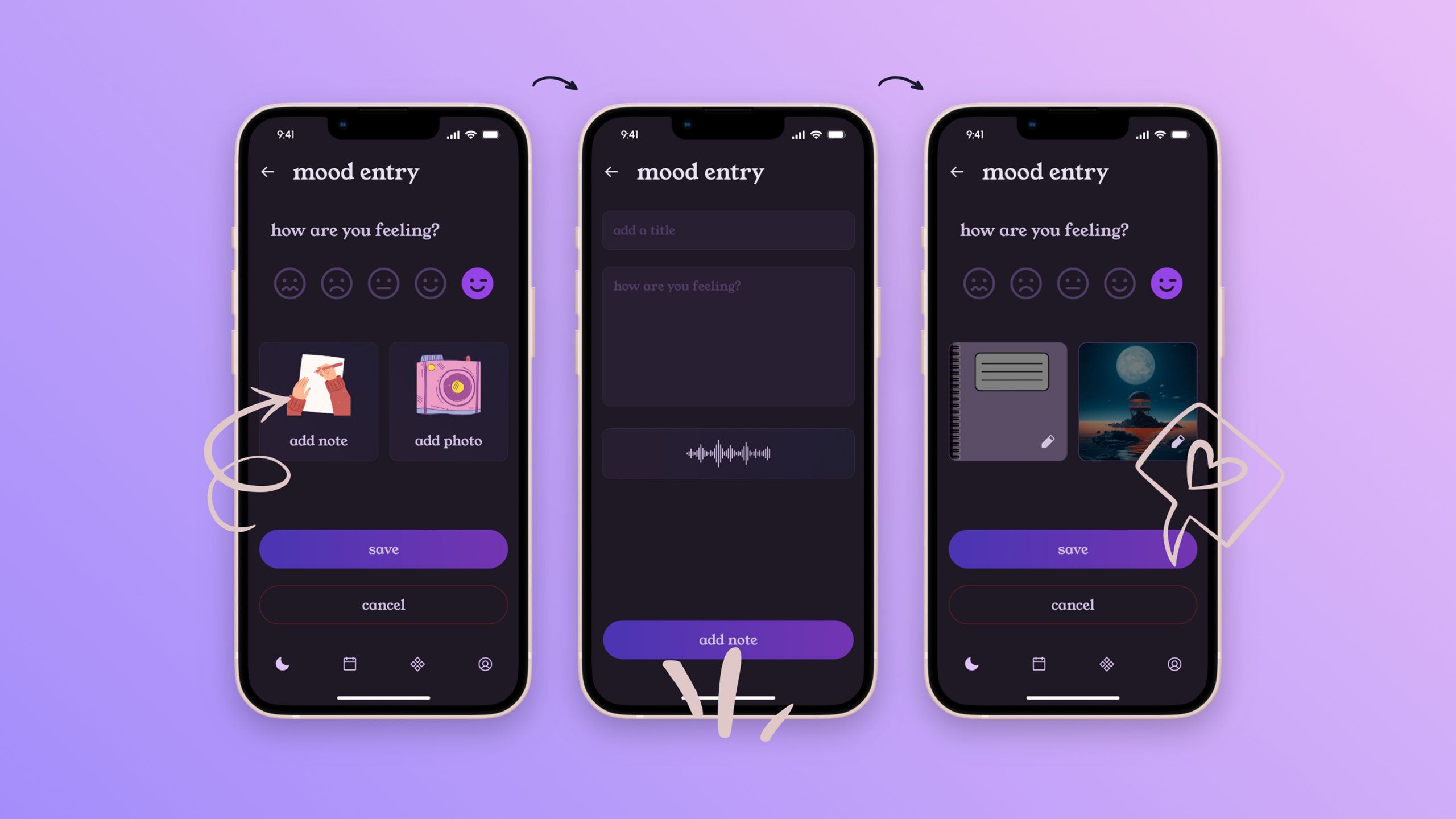
Mood tracking adds emotional context to dream interpretation. It helps users make connections between how they feel when they wake up and what their dreams might be reflecting or responding to. Over time, this creates a more complete picture, something that feels less like isolated content and more like a personal archive.
Even on days without dreams, logging a mood still gives the user a reason to check in, reflect, and stay engaged.
On any given day, users can log a mood, add a note, attach a visual. This creates space for consistent reflection, without forcing a single type of interaction. This keeps the experience personal, lightweight, and sustainable over time.
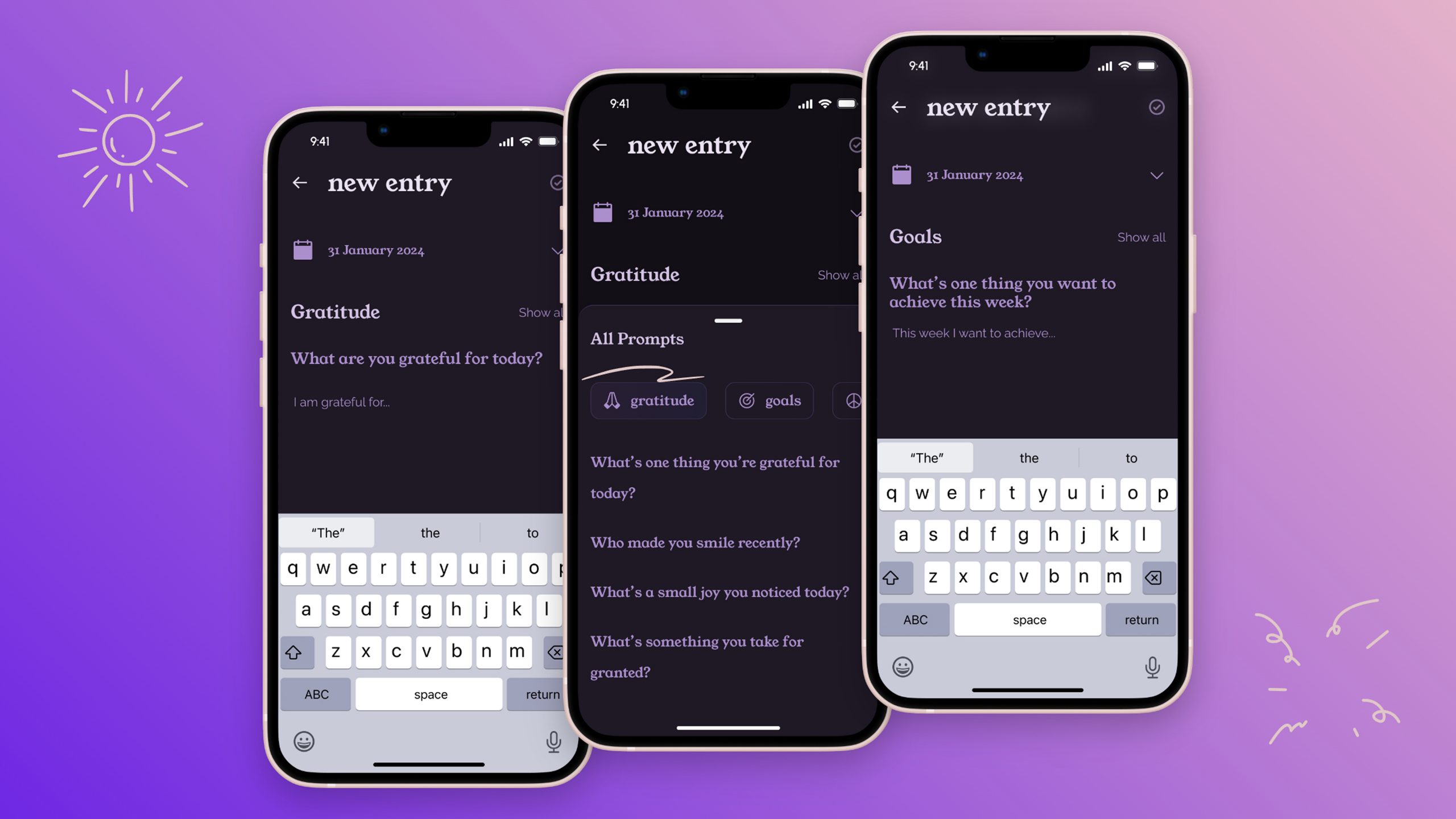
Journaling in the app is structured but flexible. Users can choose from four categories: Gratitude, Goals, Challenges, and Mindfulness, each offering a set of focused prompts.
These aren’t generic writing exercises; they’re designed to help users reflect on what matters, whether that’s progress, perspective, or daily struggles.
The feature also works without prompts, so users can write freely when they want to. It’s a space for intentional reflection, guided when needed, open when not.

The Diary is where everything comes together. It’s a chronological view of everything the user has logged; dreams, moods, journal entries, and visuals—all in one place.
It works like a personal timeline, making it easy to look back, notice patterns, or revisit specific moments. Instead of scattered entries, the Diary gives users a sense of continuity and a record of their inner world over time.
From Chatbot to Companion
Transforming Dream Master from a basic AI dream interpreter into a self-awareness tool meant rethinking both functionality and tone.
By moving beyond chatbot conventions through structure, mood tracking, journaling, and strong visual identity, I aimed to create something that felt less like a tool and more like a companion.
The project challenged me to design around emotional use cases rather than just technical ones, and to focus on how people actually interact with AI-powered products over time. There’s still more to explore, like long-term engagement patterns and deeper personalization, but this version of Dream Master lays the foundation for an experience that’s more reflective, human, and lasting.

